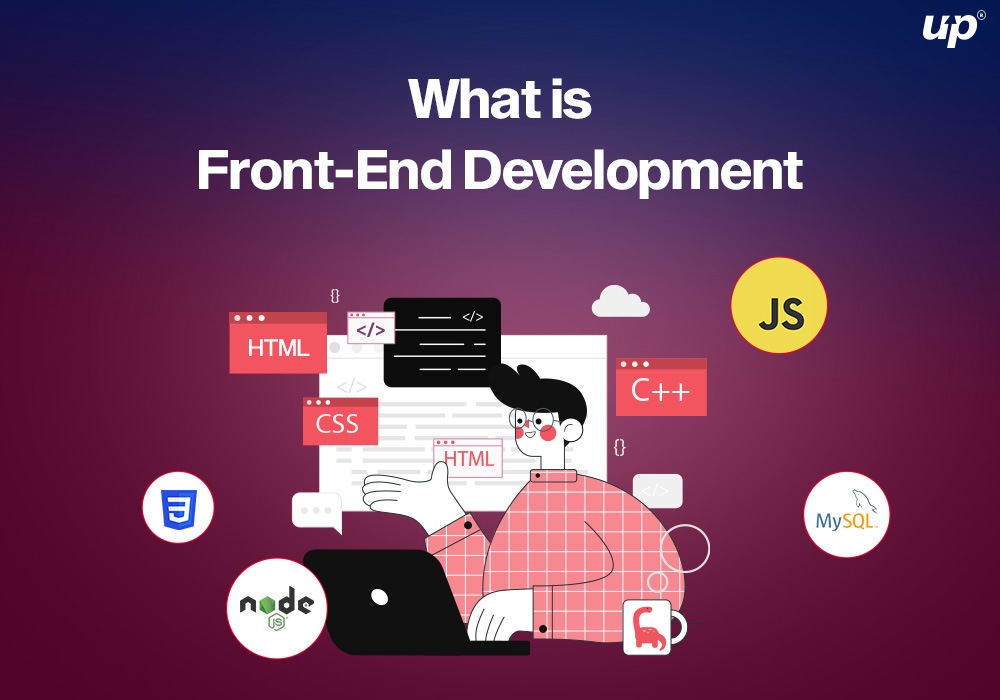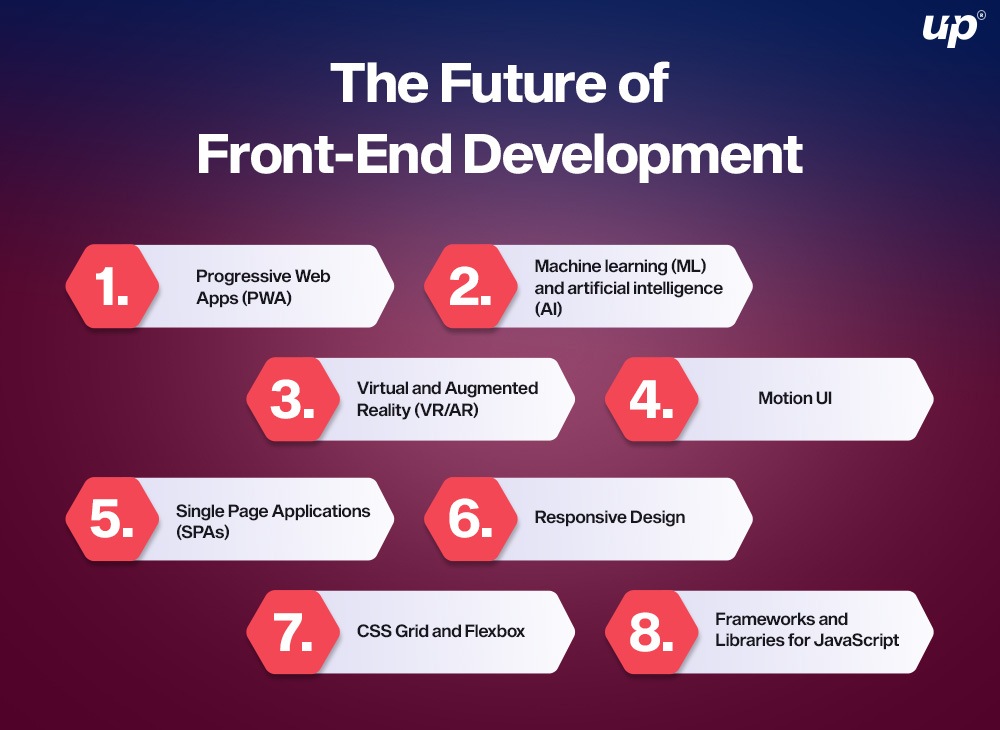Full Stack Development is an expanding field that necessitates the combination of abilities from front-end and back-end development. Having an in-depth understanding of both front-end and back-end technologies is essential to succeeding as a full-stack developer. A course for full-stack development can furnish all-encompassing education in both these areas, enabling you to construct entire web applications with assurance. An internet application’s user interface and user experience are handled by the client side, also known as the front end.
We will comprehend the value and role of front-end development in full-stack development in this article.
What is Front-End Development?

The process of developing a web application’s user interface and user experience is referred to as front-end development, sometimes known as client-side development. The style, feel, and functionality of a website are created using HTML, CSS, and JavaScript. Front-end developers are in charge of building the user-facing components of a web application and making sure it is aesthetically pleasing, user-friendly, and open to all.
A website’s structure and content are determined using HTML (Hypertext Markup Language). A website’s content can be formatted and styled with the help of CSS (Cascading Style Sheets). Adding interaction and dynamic elements to a website requires the use of JavaScript. Front-end developers need a good understanding of these technologies to create interfaces that are both visually appealing and functional.
The Importance of Front-End Development in Full-Stack Development
Because it builds the user interface of a web application, front-end development is a crucial part of full-stack development. The first things users encounter and interact with when using a web application are its user interface and user experience. Users are less likely to use a web application if the front end is poorly designed. However, users are more likely to interact with a web application if the front end is attractive to the eye and simple to use.
Front-end development has an effect on user engagement in addition to the performance and accessibility of a web application. An unsatisfactory user experience can result from front-end code that is not properly optimized, which slows down a web application’s load time. To ensure that web applications can be accessed and utilized by people with disabilities, accessibility is an important part of front-end development.
In terms of a web application’s overall security, the front end is equally critical. Front-end developers should be aware of potential security breaches and use best practices to prevent such threats. Using secure coding techniques, validating user input, and preventing cross-site scripting (XSS) attacks are part of this.
Skills Required for Front-End Development
In order to succeed as a front-end developer, you must have a firm grasp of HTML, CSS, and JavaScript and its various crucial components. Also, you must have a good design sense and the capacity to produce user-friendly and visually appealing interfaces. In addition, you must be able to spot bugs and solve them, as well as pay strict attention to detail.
It’s crucial for front-end developers to stay current with the newest front-end development technologies and trends. This involves staying current on changes to existing technologies as well as learning new frameworks, libraries, and tools.
It takes a combination of formal education and hands-on experience to become a front-end developer. A Software Engineering Course can give you a strong foundation in computer science and web development. But practical experience—which may be attained through extracurricular projects, internships, or entry-level jobs—is the greatest method to learn front-end development.
The Future of Front-End Development

New technologies and fashion trends are constantly emerging, causing front-end development to change constantly. The following are some of the major developments and trends that are influencing the direction of front-end development.
Progressive Web Apps (PWA) – PWAs are web programs that simulate the use of native apps. Without the need for installation, they are quick and dependable and are accessible from any device.
Machine learning (ML) and artificial intelligence (AI) – ML and AI are increasingly used in front-end development to offer more dynamic and personalized user experiences.
Virtual and Augmented Reality (VR/AR) – VR and AR are increasingly used in front-end development and offer users fresh, engaging ways to interact with web applications.
Motion UI is a front-end development trend that is on the rise that uses animations and transitions to improve the user experience.
Single Page Applications (SPAs) – SPAs are web applications that load all necessary resources and data on a single page, giving users a more streamlined and quick experience.
Responsive Design – As more and more people access the internet from mobile devices, it is crucial for front-end developers to create responsive designs that can adapt to various screen sizes and resolutions.
CSS Grid and Flexbox – Two new CSS technologies, CSS Grid and Flexbox, are revolutionizing the way front-end developers create layouts. They offer more capable and adaptable methods for developing grid-based layouts and managing the size and positioning of elements on a page.
Frameworks and Libraries for JavaScript – JavaScript libraries and frameworks like React, Angular, and Vue. In front-end development, js are gaining popularity. They offer a collection of tools and abstractions that facilitate the development of intricate and dynamic user interfaces.
Front-end developers should be knowledgeable about these trends and technologies in addition to performance optimization and accessibility best practices. Use of semantic HTML, image and other media optimization, and a reduction in the quantity of JavaScript and CSS needed for a page are a few examples of what this entails.
The Future of Front-End Development in Full Stack Development
Front-end development will play a more important part in full-stack development as long as technology continues to advance. Front-end developers are in charge of designing user interfaces that are not only aesthetically pleasing and practical but also quick, secure, and easily accessible. Front-end developers need to keep up with the most recent trends and technologies as well as best practices for performance and accessibility optimization in order to meet these demands.
A Full Stack Developer Course can provide you with a solid foundation in both front-end and back-end development and its crucial details, enabling you to develop into a well-rounded full-stack developer. Now is an excellent time to pursue a career in this field and have a positive impact on the web because of the increasing need for qualified full-stack developers.
In conclusion, front-end development is a crucial component of full-stack development because it affects a web application’s overall performance and security, as well as how users interact with it. In order to be efficient as a front-end developer, you must have an excellent understanding of HTML, CSS, and JavaScript, in addition to a good sense of design and attention to detail. The front-end development industry is always evolving. Thus, front-end developers must stay abreast of new developments.








